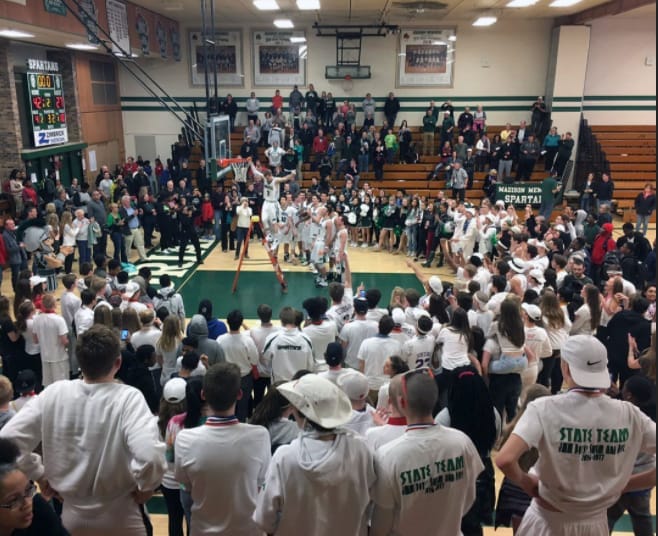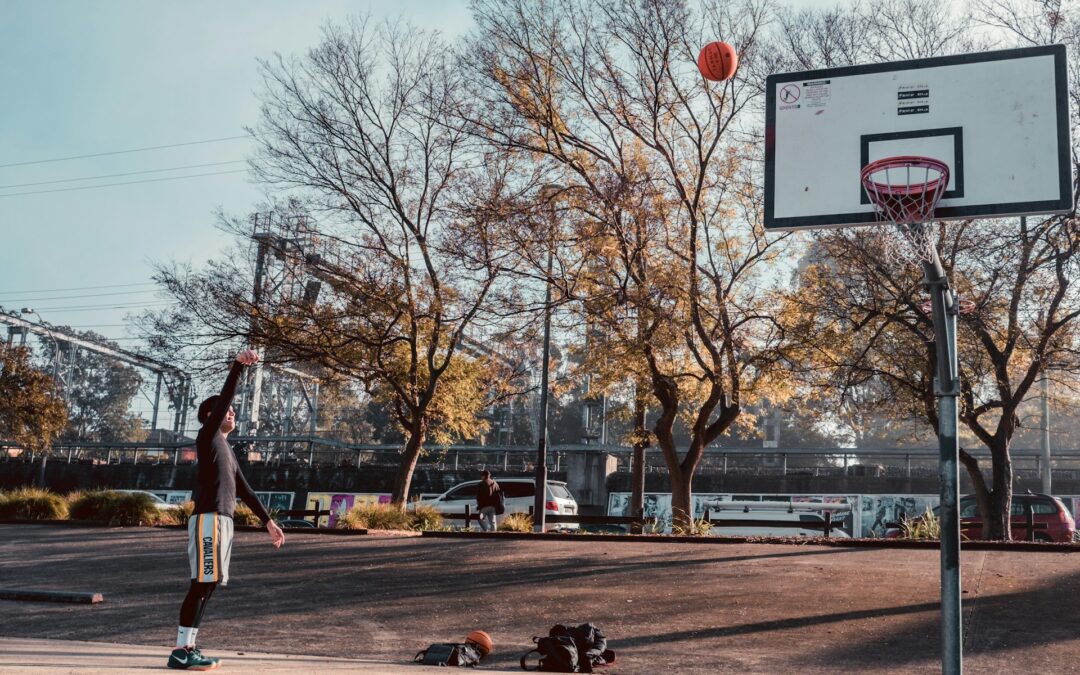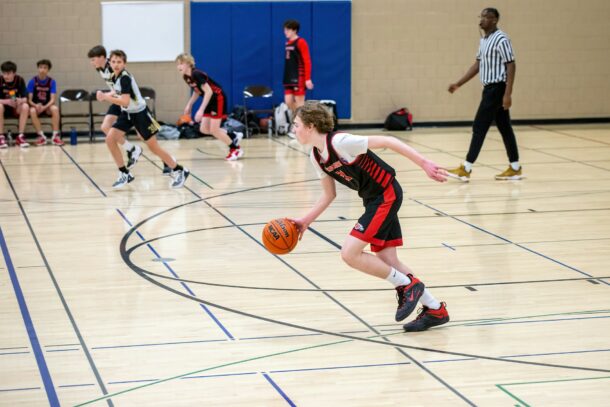
5 Points to Become a Better Basketball Shooter
For players looking to take their scoring to the next level, learning how to become a better basketball shooter starts with building a strong technical foundation. Shooting is more than just repetition, it’s the result of proper mechanics, consistent targeting, smart practice, and attention to detail.
In this post, we’ll break down the key principles behind becoming a more efficient shooter, with insights from veteran college coach Doug Schakel and time-tested teaching points from coaches across all levels.
1. Master the Mechanics First
Before you can hit shots consistently, you need a reliable and repeatable shooting motion. That starts with:
- Balanced base: Feet should be shoulder-width apart, with your shooting-side foot slightly ahead for natural power transfer.
- Grip and hand placement: The ball should rest on your finger pads with a visible pocket of space between the ball and your palm. The off-hand guides but does not interfere.
- Elbow alignment: Your shooting elbow should be tucked in, forming a straight line from your toe to the rim.
- Release and follow-through: Finish high with a relaxed wrist snap, fingers pointing at the rim, and hold your follow-through.
This alignment helps eliminate variables, reduces off-target misses, and increases your margin for error. Without this structure, even the most intense practice won’t result in consistent results.
2. Build Muscle Memory Through Smart Practice
Effective shooters don’t just shoot more, they practice smarter. Start with close-range form shooting to reinforce muscle memory and rhythm. Focus on swishes, not just makes. Then, gradually increase your distance.
Include:
- Shooting off the dribble
- Coming off screens
- Free throws under pressure
- Fatigue shooting drills
These game-like reps build your ability to score in realistic conditions. Track makes and misses, analyze patterns, and make micro-adjustments. The best shooters treat practice like performance and their numbers reflect it.
3. Targeting: Where You Look Matters
According to Coach Schakel, targeting plays a key role in distance control and accuracy. While many shooters default to aiming at the front or back of the rim, his preferred method is the bullseye technique, focusing on a tiny imaginary dot in the center of the hoop.
- Front rim targeting allows for soft shots to crawl in but may lead to short misses.
- Back rim aiming can produce hard bounces due to the lack of give.
- Bullseye targeting emphasizes pinpoint accuracy and mentally narrows your aim, much like a marksman hitting the center of a target.
This approach has helped many shooters who struggle with inconsistent depth or streaky performance.
Join the TeachHoops Community

TeachHoops.com offers a unique platform for coaches to share experiences and gain new insights. Learn from others who have navigated similar challenges. It’s an invaluable resource for those looking to:
- Broaden perspectives
- Refine strategies
- Enhance their leadership and motivational skills
Step into Enhanced Coaching
Win the Season: Basketball Masterclass!

4. The Importance of Shot Arc
Another crucial element in shooting success is the launch angle or arc of the shot. A higher arc increases the ball’s entry space into the rim:
- A 60° launch angle offers the most room for the ball to drop cleanly through the basket (ideal inside 15 feet).
- A 52.5° launch angle is better suited for longer shots where energy conservation and speed matter.
- A flat shot (below 45°) drastically reduces makeability, especially from deep.
Schakel even uses a simple PVC arc trainer to help players visualize and train their arc. A higher, softer shot also increases your chances of “deflected makes” and “rim dancers,” reducing hard misses and rim outs.
5. Straight Is Better Than Perfect
Of the three elements, distance, arc, and direction, shooting straight is the most critical. You can be slightly short or long and still make shots, but if the ball veers left or right, it’s almost always a miss.
Coach Schakel emphasizes:
- Slight body turn, not a squared-up stance, to promote better elbow and hand alignment.
- Lead and trail shoulders help guide the shooting motion naturally.
- Use of a vertical “shooting tunnel” formed by toe, knee, elbow, and eye.
He compares it to throwing darts: when the body is properly aligned, the shot travels straight without forcing it.
Track Your Progress With Purpose
One of Schakel’s most effective tools is the free throw accuracy game. Each make is scored based on quality:
- 3 points: Swish
- 2 points: One rim touch
- 1 point: Multiple rim touches
- 0 points: Miss
By rewarding clean makes, this system teaches players to value precision, not just results. Use it during practice or create a team-wide competition like a “free throw ladder” to track standings and name captains based on performance.
Final Thoughts: Become a Shooter, Not Just a Player
Learning how to become a better basketball shooter requires commitment, structure, and repetition, but more importantly, it demands intention. By pairing proper mechanics with intelligent, focused practice, any player can see significant gains.
Whether you’re a youth player trying to improve your form, a high school guard looking to increase your scoring average, or a coach searching for effective shooting drills, these principles hold true.
Latest Posts
- Complete Offseason Basketball Workout for Youth Players
- The Best Youth Basketball Passing Drills Every Coach Should Know
- How to Build a Youth Basketball Defensive System That Works
- How to Make Every Youth Basketball Practice Engaging
- Competitive Basketball Shooting Drill to Improve Practice Intensity




